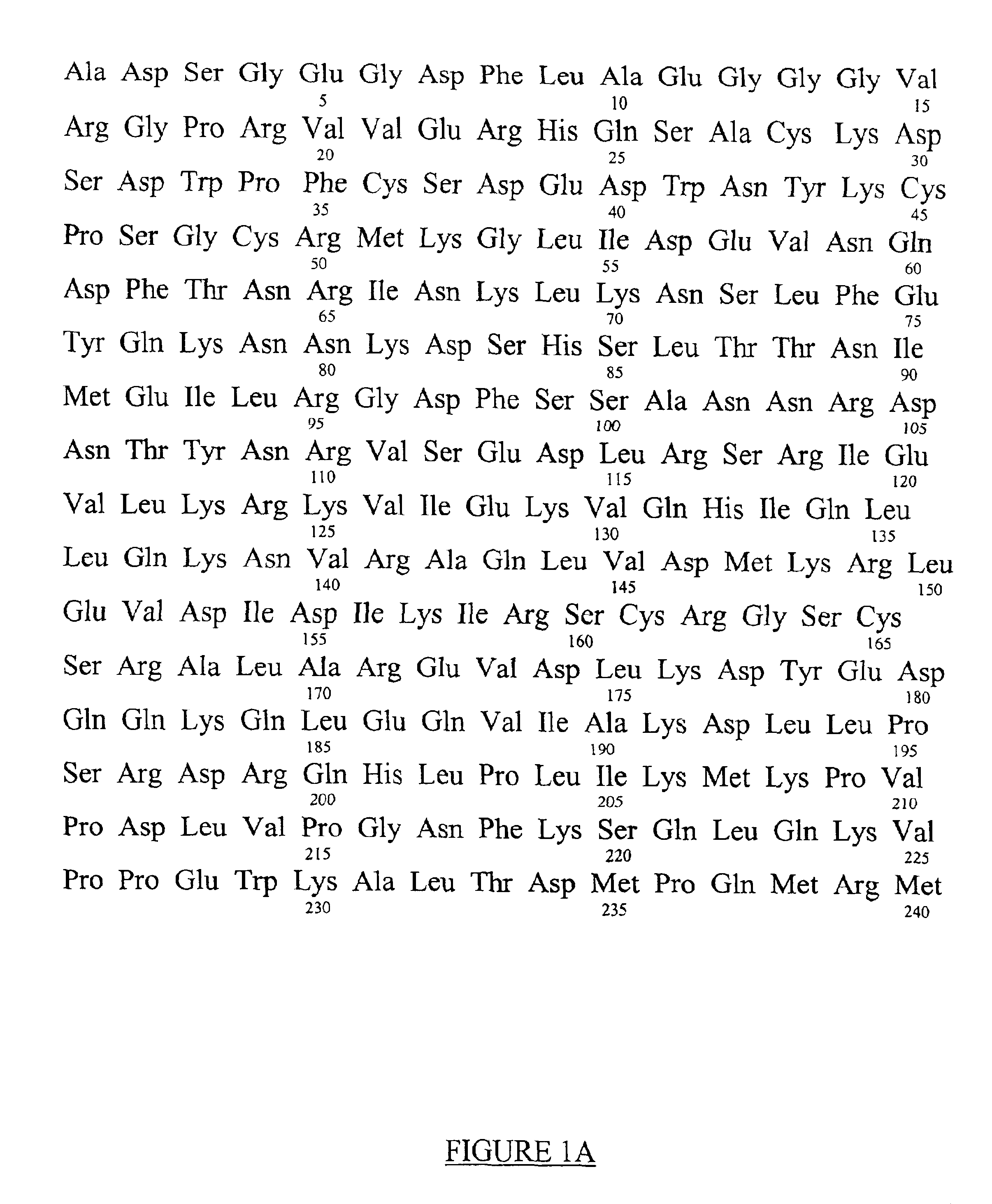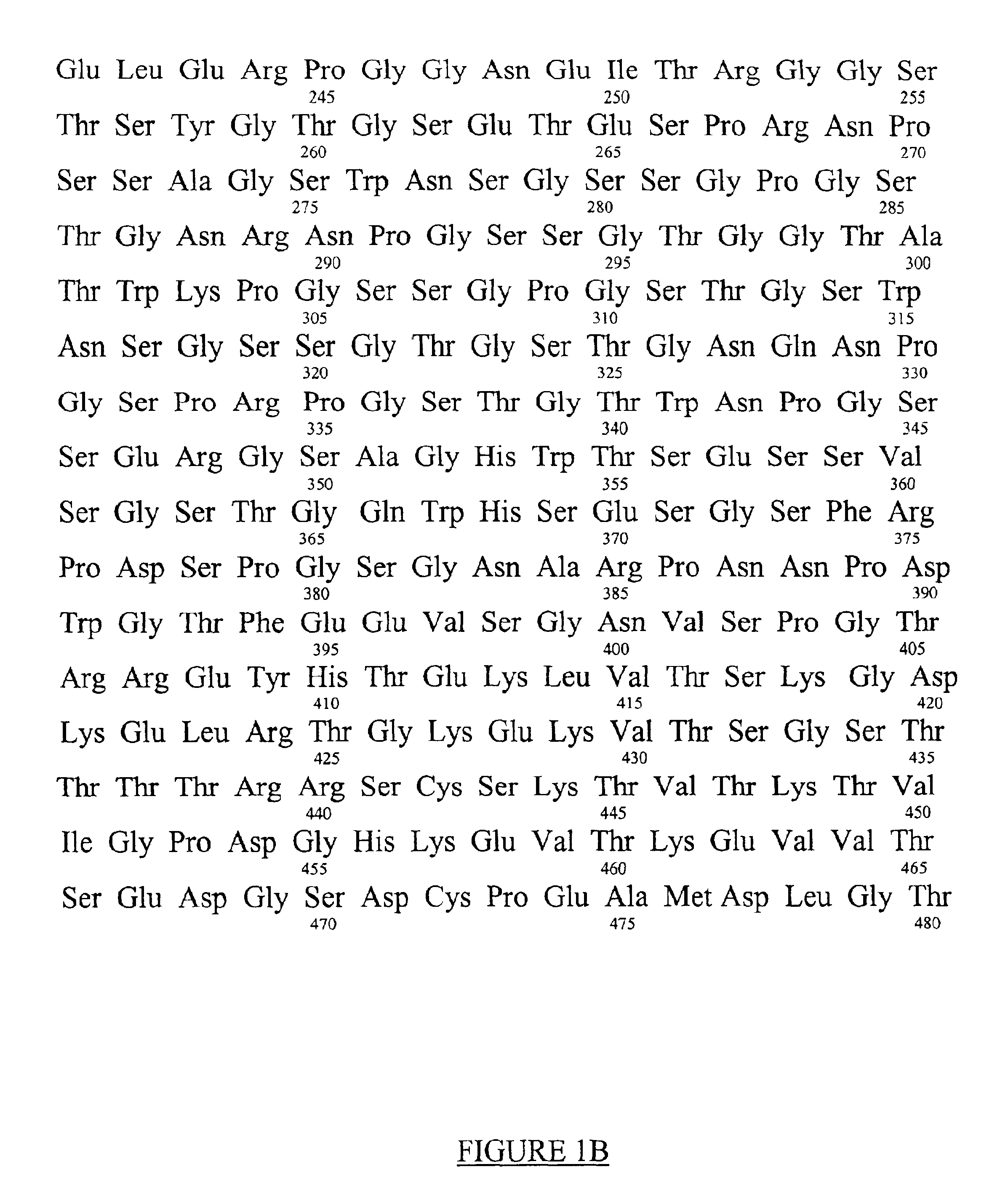Pro-inflammatory fibrinopeptide
a fibrinopeptide and pro-inflammatory technology, applied in the field of rheumatoid arthritis treatment, can solve problems such as difficult results interpretation, and achieve the effects of reducing the number of inducible agents
- Summary
- Abstract
- Description
- Claims
- Application Information
AI Technical Summary
Benefits of technology
Problems solved by technology
Method used
Image
Examples
Embodiment Construction
[0023]The amino acid sequence of the pro-inflammatory peptide of the invention is Gly-Pro-Arg-Pro (GPRP) (SEQ ID NO:2). This sequence is related to amino acids 17 through 20 of the A / alpha chains of fibrinogen (FIG. 1). Amino acids 1 through 16 of the A / alpha chains are cleaved-off by thrombin or thrombin-like proteases in vivo and this now separated peptide is known as Fibrinopeptide A. Cleavage of Fibrinopeptide A by thrombin is the initial cleavage in the formation of fibrin clots from its precursor, fibrinogen (see FIG. 2). This cleavage exposes new amino-termini of the A / alpha chains (beginning with amino acid number 17) with the leading sequence Gly-Pro-Arg. These newly exposed sequences, which are centrally located in a spatial model of fibrinogen have been referred to as “knobs”, and are able to bind to complementary “holes” in the gamma chains of the same or different fibrinogen molecules and thus facilitate the crosslinking of fibrin(ogen) into a meshwork, or clot (see FIG...
PUM
| Property | Measurement | Unit |
|---|---|---|
| cell adhesion | aaaaa | aaaaa |
| adhesion | aaaaa | aaaaa |
| structure | aaaaa | aaaaa |
Abstract
Description
Claims
Application Information
 Login to View More
Login to View More - R&D
- Intellectual Property
- Life Sciences
- Materials
- Tech Scout
- Unparalleled Data Quality
- Higher Quality Content
- 60% Fewer Hallucinations
Browse by: Latest US Patents, China's latest patents, Technical Efficacy Thesaurus, Application Domain, Technology Topic, Popular Technical Reports.
© 2025 PatSnap. All rights reserved.Legal|Privacy policy|Modern Slavery Act Transparency Statement|Sitemap|About US| Contact US: help@patsnap.com



